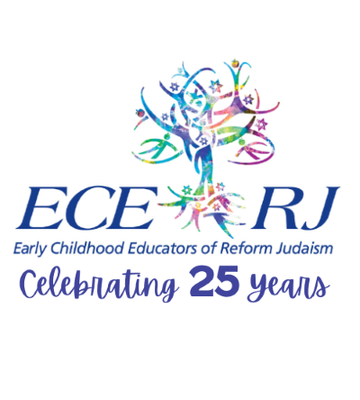Activity
-
Rebecca Baizen posted an articleBuilding Community Through Tikkun Olam in Early Childhood Programs see more
“Kol Yisrael arevim zeh bazeh - All of Israel are responsible for one another."
Social action is deeply ingrained in Jewish life because of the core Jewish value of Tikkun Olam—repairing the world. For early childhood directors and assistant directors leading preschool programs in Reform Jewish congregations, incorporating Tikkun Olam into the curriculum creates meaningful opportunities to build kehillah (community) while teaching our youngest learners essential Jewish values.
Tikkun Olam encompasses far more than charitable giving. It includes caring for the environment, promoting peace, and taking collective action to do good in our world. When we bring social action into early childhood programs, we emphasize to children that contributing to the well-being of others and our world is fundamental to being part of the Jewish community. These experiences instill values such as kindness, empathy, and social responsibility from the earliest ages.
Practical Programming Ideas
The most successful Tikkun Olam projects are hands-on and address issues children can concretely understand. Consider organizing drives for canned food, holiday toys, or diapers for local food pantries. One creative approach involves asking families to bring pasta boxes for Purim groggers, which are then donated to those in need.
Temple-wide Mitzvah Days offer concentrated opportunities for social action—writing letters to soldiers, preparing meals for shelters, or visiting nursing homes to brighten residents' days. Partner with organizations like schools in underserved areas to provide holiday gifts and supplies, or work with local food pantries where children can help package food items.
Early childhood programs may not need to organize a project from start to finish. Connecting to what is already in place is one way to build community within the Temple and at the same time bring Tikun Olam to life. Many Temples have an active Social Action committee. There may already be partnerships in place with local food pantries, schools, community gardens, etc. For example, perhaps the Temple makes sandwiches once a month for a shelter - the early childhood center or a group of families could take charge of that for one of the months. When the Temple is holding a food drive, young children can bring in items and/or sort or pack the items that have been donated.
Environmental projects also resonate strongly. Organize park cleanups or community garden maintenance days - or organize a family gathering to participate in a local park clean-up or community garden that is looking for volunteers. Host annual fundraisers like lemonade stands where children actively participate in raising money for meaningful causes.
Engaging Families
Projects that parents and children complete together prove most successful. Create hygiene kits as families, volunteer together serving food at shelters, or organize monthly themed drives for pajamas, school supplies, or books. Connect classroom learning with home and community by having children bring items from home, discuss Tikkun Olam concepts through age-appropriate books, and then gather families to pack donations together.
Seek out local nonprofits already doing important work and support their efforts. Encourage families to attend community events celebrating diversity and social justice.
Through Tikkun Olam programming, we repair the world while strengthening our kehillah—creating engaged, compassionate Jewish community members from the very start.
Fern Katz
Director of Early Childhood Education
Chicago Sinai Congregation
Chicago, IL
-
Andy Brenits posted an articleWhen I envision the design of an early childhood play ecosystem, I begin with the notion of belongin see more
By Miriam Beloglovsky
When I envision the design of an early childhood play ecosystem, I begin with the notion of belonging. What will create a sense of place for the children and adults spending time in this ecosystem? What values guide all the practices in the ecosystem (physical, temporal, socio-emotional, and community)?
Early childhood ecosystems are places for learning, healing, playing, and gathering. They are places where children can explore and solidify their identities, including their ethical identities and their relationship with peers and adults. Tikkun Olam inspires us to design ethical and just places grounded in Mitzvot and Tzedakah to promote equality and inclusion.
Imagine...
- Ecosystems grounded in empathy and understanding values promotes playfulness as an attitude of freedom, imagination, and joy!
- Ecosystems rich in possibilities for curiosity and discovery.
- Ecosystems where children and adults get lost in play and wonderment.
- In ecosystems where labels and disabilities do not exist, adults see children as full of potential and with a deep desire to grow and succeed.
The question that often emerges from many educators is, “Where do I start?” Start by imagining a place where you belong and what it means to you, the children, and their families.
Imagine that you belong to a place where you can…
- Be your authentic self
- Wonder and play
- See your cultural values represented
- Explore your identity
- Be inspired by the beauty in the space
- Find peace, joy, and playfulness
- Build interdependent relationships
- Appreciate your family and cultural values
- Evaluate concepts of social justice, equity, and inclusion
Begin with a reflective conversation about the meaning of each of the tenets listed above, and carefully define them so that there is a clear understanding of their meaning.
Part of the reflection may include the following considerations:
We are social beings that thrive when interacting with people. We seek friendships and learn best in the context of social interactions. Designing spaces for collaborative play and quiet refuge where small children can be together and build friendships.
We belong when we can follow our ideas and interest. We learn when we have a purpose and are supported by a strong sense of connection to the ecosystem. The temporal space is designed to invite observation and reflection for educators and also for educators and children. There is value in long-term investigation and time to revisit emerging ideas and interests.
Learning happens when we actively engage in the world we inhabit. We learn when our contribution is respected, and we know we are valuable community members. Design a social-emotional space focused on the values of peace. Recognize that we all have big emotions and the need to express them. As educators, paying careful attention to feelings and emotions, it is essential to have an awareness of the languages children (verbal, artistic, or behavioral) use to express their feelings. Such an awareness can help us practice attentive listening rather than critical listening. Attentive listening demonstrates to children that we value them and respect their feelings and contribution to the community.
Making meaning of the world we live in leads to more profound knowledge. This happens best in the context of a learning ecosystem. When spaces are designed to offer children unscripted materials, educational media, and tools to express and explore their thinking and ideas, they can give meaning to what they are experiencing.
The Jewish principles of Tikkun Olam, Tzedakah, and Mitzvot can help us guide the design of early childhood play ecosystems to engage children in being active participants in social justice and to become the leaders that can truly create a more hopeful, democratic, and sustainable world. Children have the empathy and compassion to engage in conversations about social action and their ethical responsibility to help repair the world. We must weave these values into all our practices and pedagogy intentionally. This will require us to reflect and give meaning to our individual and group understanding of these essential principles. To define them and collect the data (evidence) that they are anchoring our practices. Only then can we be confident that we have designed an early childhood ecosystem anchored in joy and respect for humanity and the beautiful world we inhabit.
-
ECE-RJ posted an articleRepairing our world, or tikkun olam, has become part of the fabric of our classroom. see more
Tikkun Olam in Our Classroom
We take care of ourselves; we take care of each other; we take care of our world. The Temple Beth Shalom Preschool children in Needham, MA wholeheartedly embrace these guiding principles. Repairing our world, or tikkun olam, has become part of the fabric of our classroom. As parents, as teachers, and as a community, we often wonder if the message resonates. When it does, the children show us---in no uncertain terms---that they heard it loud and clear.
Taking care of our school community:
When one of the families in our classroom dealt with an ailing grandparent, the community came together with amazing support. Every day, lunches showed up for the twin girls. The children in class noticed and wanted to help. Together, we baked banana bread for the family and had it delivered during shiva.
After reading Being Grateful by Rebecca Pettiford, one of the twins shared what she was grateful for, “A lot of people who put lunch in my cubby, mail in my mailbox, and somebody to play basketball with me, and my sister, Zoe, and me.”
Taking care of the greater community:
On Fridays, as part of our Shabbat celebration, we sing a tzedakah song that I wrote several years ago, sung to one of the many tunes of Heini Ma Tov:
Our Tzedakah Song
Before Shabbat we like to give – money for tzedakah.
We put our coins right through the lid – money for tzedakah.
When we work together make a start – la la la, la la la, la la la.
We can change the world, we’ll do our part – la la la, la la la, la la la.
After we sing, we pass the tzedakah jar around and discuss how our collection helps “make things right” for other people. The children have shared:
- “Maybe if they don’t have money, they couldn’t buy anything.”
- “If they don’t have food, we would have to send them that money.”
- “Maybe if they don’t have money, they don’t have a house.”
- “If anyone does not have a bunk bed, they have to get some money and then buy a bunk bed.”
- “If they didn’t have enough money to get to an ambulance.”
When the tzedakah jar becomes full, the children discuss andvote on where to send the money. Observing their decision-making process highlights their varied yet comprehensive understanding of how to make our world a better place.
Think Globally and Act Locally
The children often surprise us with their sensitivity and awareness of everything happening in the classroom. They notice when another child needs help and jump in without prompting. They also help with washing tables, pushing in chairs, and watering plants. We also encourage them to think globally, or at least outside our immediate classroom community. They are quite competent and are very proud of all they can do. We strive to live our guiding principles every day: we take care of ourselves, we take care of each other, and we take care of our world.
Leslie Siegel
Lead Teacher, 3-4-year-olds
Temple Beth Shalom, Needham, MADecember 2018



